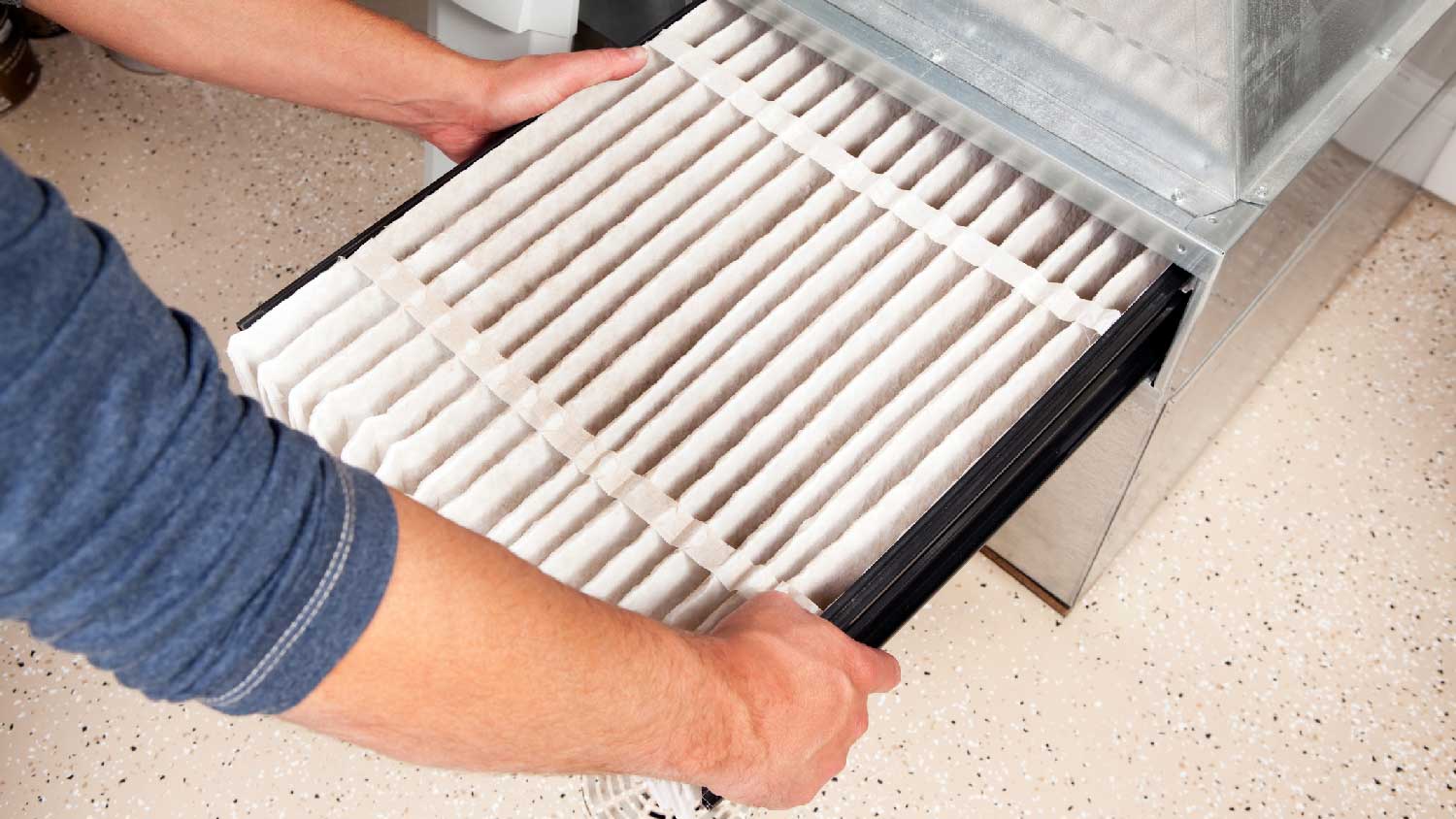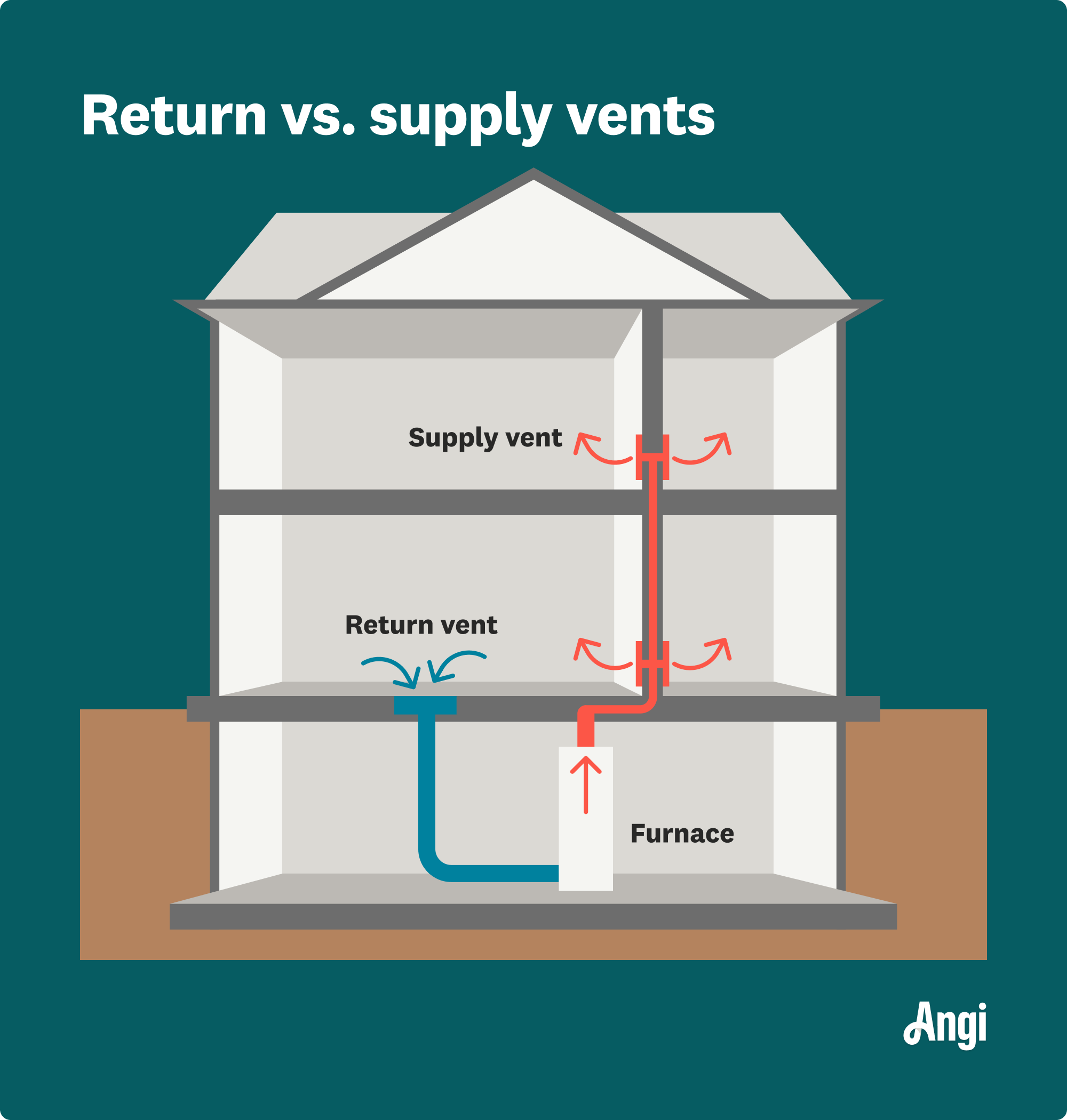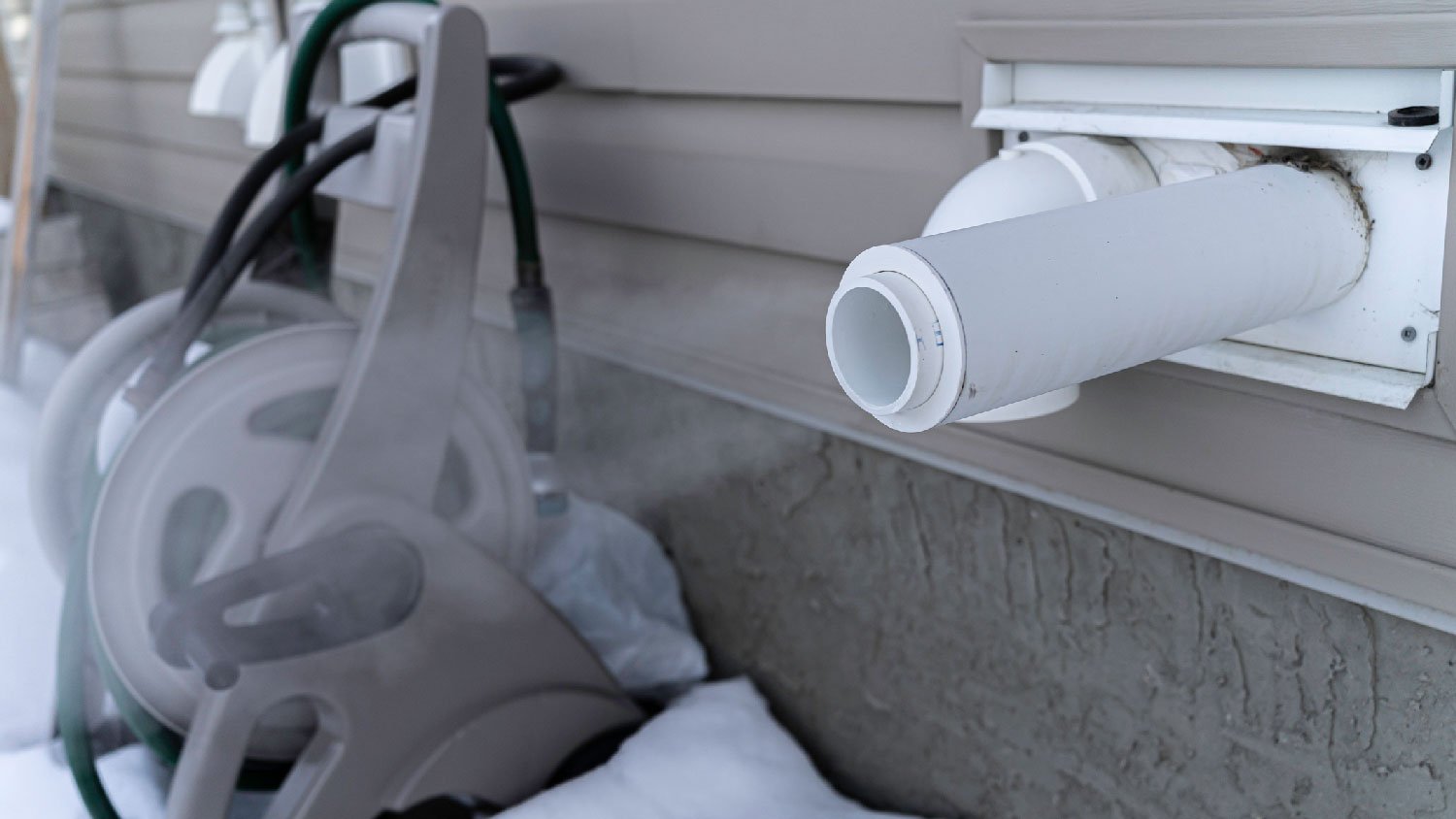
A blower door test can identify air leaks in your home and help boost energy efficiency. Use this blower door test cost guide to see what your test will total.
Don’t let a leak leave your household out in the cold


A leaking furnace can lead to water damage, which costs $1,300 to $6,200 to repair.
Water condensation is natural in furnaces, but excess condensation could mean trouble.
Replace air filters at least every three months to improve airflow and reduce leak risk.
Annual furnace inspections can catch potential problems before they cause leaks.
Don’t attempt DIY repairs because the water increases the risk of shock or electrocution.
Imagine you’re walking past the utility closet or grabbing something in the basement, only to see a suspicious puddle of water pooling around the bottom of the furnace. Is the furnace leaking water? Surely that isn’t supposed to be happening, right? As it turns out, furnace leaks are common, and oftentimes, they just mean that the furnace is working normally or that there’s a minor issue in the system. However, because a leak can cause water damage or prevent the furnace from working altogether, it’s time to consider the source and call in a pro for help.
The most common concern with water leaking from your furnace is the potential for water damage. The cost to repair water damage ranges between $1,300 and $6,200, so it’s a good idea to get help right away if you notice any leakage. In rare cases, water leaking from your furnace can be very dangerous because of the risk of electrocution. If it’s safe to do so, turn off the furnace and clean up the water leak as quickly as you can. Then, call an HVAC service professional near you to help you make the necessary repairs ASAP.
One of the most common causes of a furnace leaking water is water condensation. Condensation can happen from the cool exhaust of a high-efficiency furnace or could be the sign of an incorrectly sized flue pipe on a standard-efficiency furnace.
Condensation on a high-efficiency furnace is often normal, but it’s still safest to have a furnace specialist come take a look for any cracked pipes or other leak sources.

Do you remember the last time you changed your furnace filters? You should change a furnace filter about every three months. If the filter is clogged, it disrupts the furnace’s temperature regulation and forces it to work harder to heat your home. As it works harder, it can lead to more condensation, not to mention more expensive heating bills.
Your furnace has several pipes to direct condensation away to the drainpipe while also venting combustion gases and directing air to your home’s vents. These pipes can become clogged with dust, dirt, and other debris over time. When the pipes are clogged, the condensation may build up and leak from the furnace.
You’ll need a pro to handle the leak and clear out any clogs. Schedule an annual furnace cleaning to minimize the risk of leaks.
As a professional, I'd never miss out on routine servicing for my heating system. It's really easy to skip servicing your unit, but it can lead to breakdowns and high energy bills. It can be a safety issue, too.

The air return draws air from a room and sends it to the furnace for heating, but it can easily get blocked by dust or debris. Like with blockages in other parts of the HVAC system, a blocked air return vent can cause the system to work less efficiently and produce more condensation. When the system is overworked due to a blocked air return, parts may also crack or break, leading to leaks.
A furnace has a drain line to carry condensation away from the appliance for draining, but if the line is clogged, the water will leak out from the ends of the line. You may have a drain line clog if you notice more water than usual around the bottom of the furnace. Call in a pro ASAP to clear the clog and get the unit draining properly again.
The drain pan, also known as a drain trap or condensate pan, collects water from condensation that naturally occurs when the furnace is operating. It also keeps the condensation from back-flowing. The drain pan may leak if the drain lines or the drain itself become clogged, and the leaking drain pan can cause water damage or even mold growth.

With winter comes dry air, and adding heat from a furnace is a recipe for dry skin. Fortunately, many furnaces have humidifiers to help add moisture to the warm air that’s sent out through the vents around your home.
Unfortunately, the humidifier can become clogged, causing condensation to leak from the humidifier rather than onto the floor or into the drain pan. Annual furnace inspections can help catch clogs and other humidifier issues before they become larger problems.
High-efficiency furnaces use a secondary heat exchanger to reuse excess heat from the flue gas to warm your house. This part can become clogged with soot or scale from hard water. If it does get clogged, condensation can leak from the secondary heat exchanger, and you’ll notice water on the floor around the furnace.
You’ll need a pro to check the leak and determine potential repairs, but a faulty secondary heat exchanger could require you to pay to replace the furnace.
If you notice water around the blower motor, it may actually be a leak that’s coming in from the condensate pump or secondary heat exchanger. Faulty screws, clamps, or seals on the blower motor can also allow condensation to leak through.
Either way, make sure to have a pro inspect the furnace. They can help you decide whether to replace the blower motor or buy a new furnace.
The condensate pump is an essential part of your HVAC system that’s designed to prevent a furnace from leaking water. However, it may fail, causing excess condensation to flood the drain pan and even leak back into the furnace. If you have a condensate pump failure, it may leak onto the floor around the furnace, or you might notice rust and water stains in the furnace cabinet. A pro will need to replace the condensate pump for you.

Combustion creates heat in the furnace, and this process produces exhaust gases. As the gases release, condensation occurs. This is natural, but a poorly installed exhaust pipe or one that isn’t the right size for your furnace can cause the condensation to leak through the gaps. Turn to a furnace repair specialist to get your furnace fitted with the proper exhaust pipe.
The inducer assembly is a smaller motor than the blower motor and is responsible for pushing combustion gases out the flue pipe through the chimney or through a vent to the outdoors.
In most cases, a broken inducer motor simply won’t allow the furnace to start up at all. However, a cracked inducer assembly could cause a water leak or even a leak of combustion gases, including carbon monoxide, so you may need to pay for an emergency repair to have a furnace repair pro replace this broken part.
Install carbon monoxide alarms on every level of your home, in central locations, and outside bedrooms. Check all of your carbon monoxide detectors every month, and replace the batteries on a set schedule according to the manufacturer’s instructions.
Because there is a risk of shock or electrocution when water is leaking from a furnace, it’s important not to try to fix the leaky furnace yourself, no matter what’s causing the leak. Instead, hire a local furnace repair company to safely handle the issue and get your home back to feeling warm, cozy, and dry.
From average costs to expert advice, get all the answers you need to get your job done.

A blower door test can identify air leaks in your home and help boost energy efficiency. Use this blower door test cost guide to see what your test will total.

What you’ll pay in Columbus, OH, for furnace repairs depends on many factors. Here’s a breakdown of what can go wrong and the cost to fix those issues.

Switching from oil to gas heating could impact your savings. This guide will help you understand the cost to convert from an oil furnace to a gas furnace.

A whole-house humidifier costs between $400 and $800, but can have an ROI of 40%. Learn if adding this HVAC appliance is worth it for you.

Even when you're sweating up a storm on a hot day, your AC should keep its cool. Here's what to do when condensation on your AC signals larger problems.

Do you have a clogged AC drain line? We dig into the reasons behind those pesky blockages and how to clear them for optimal AC performance.